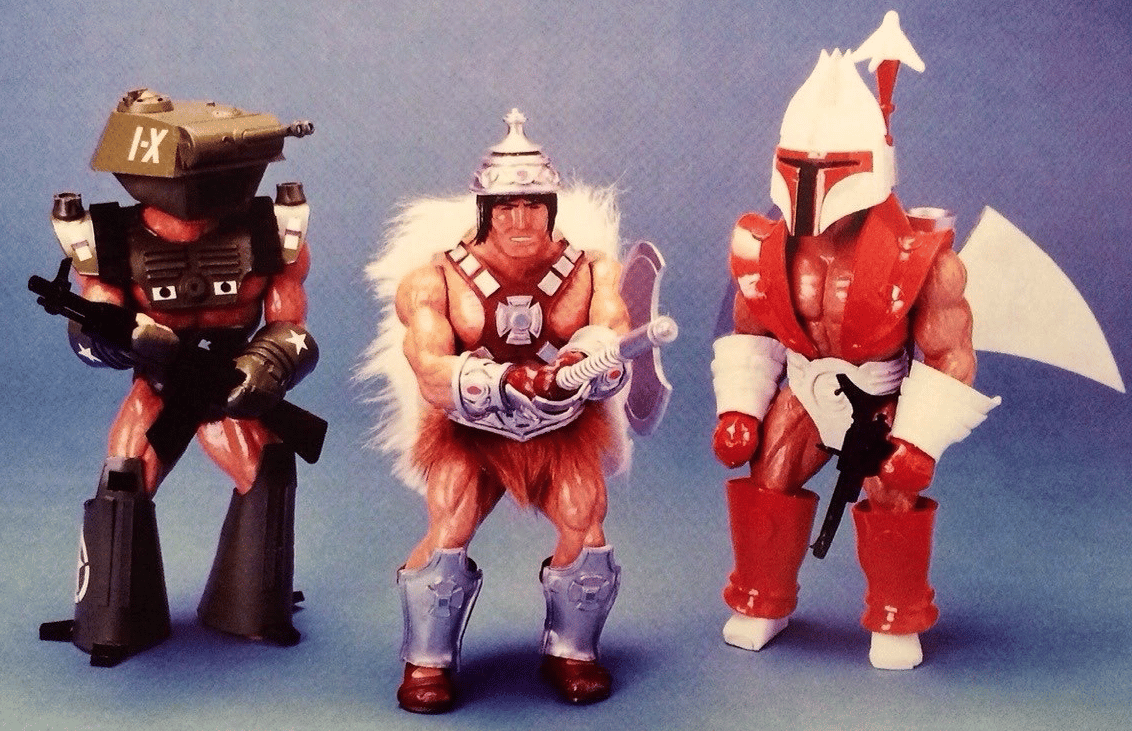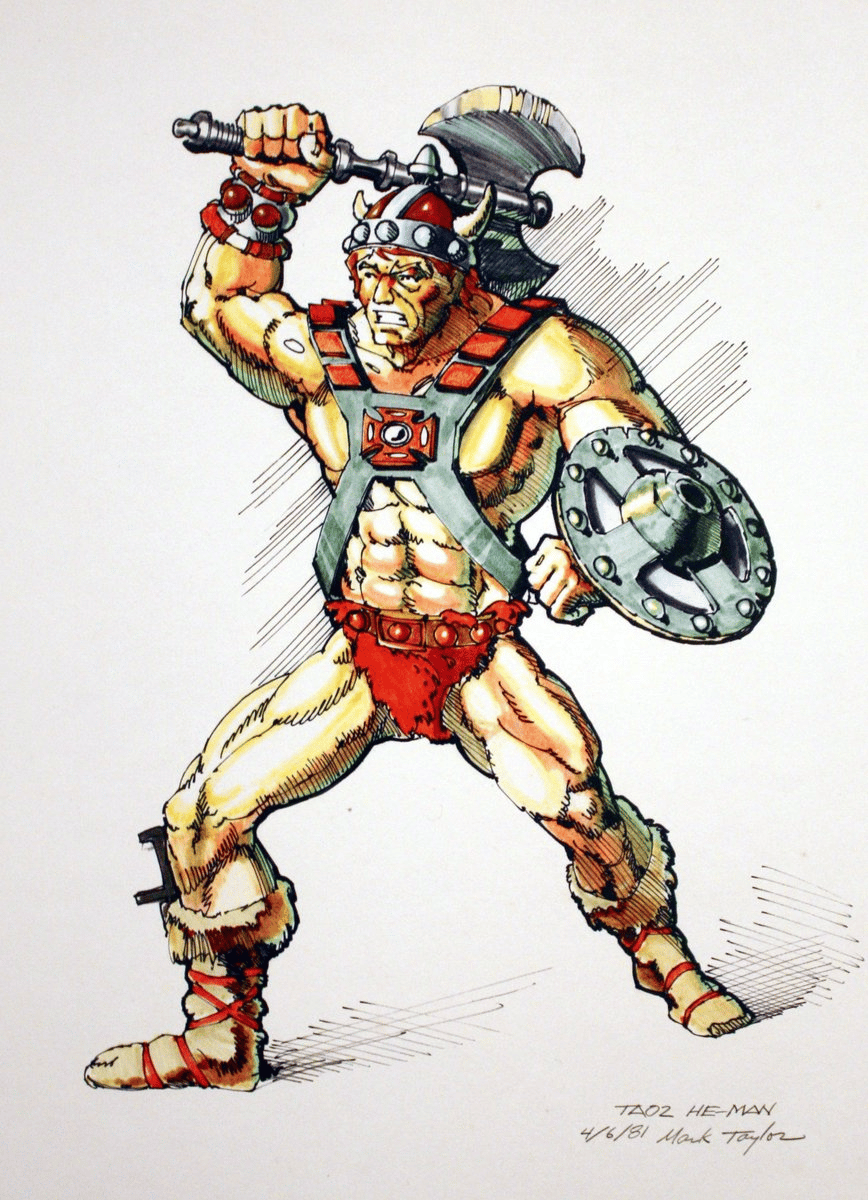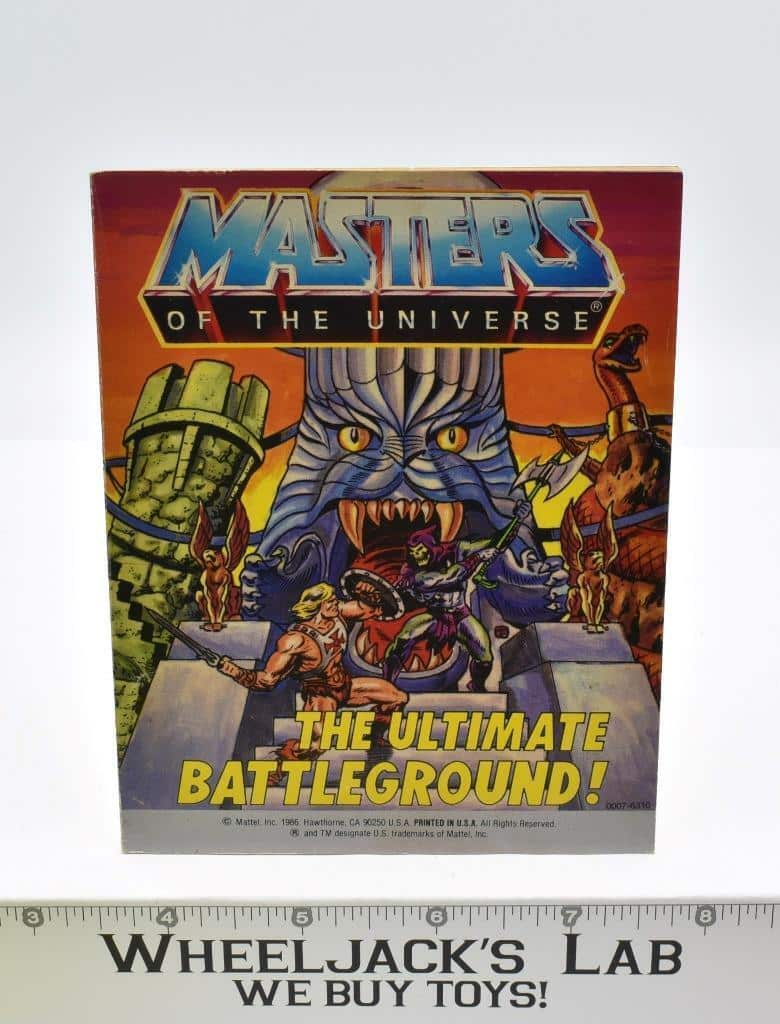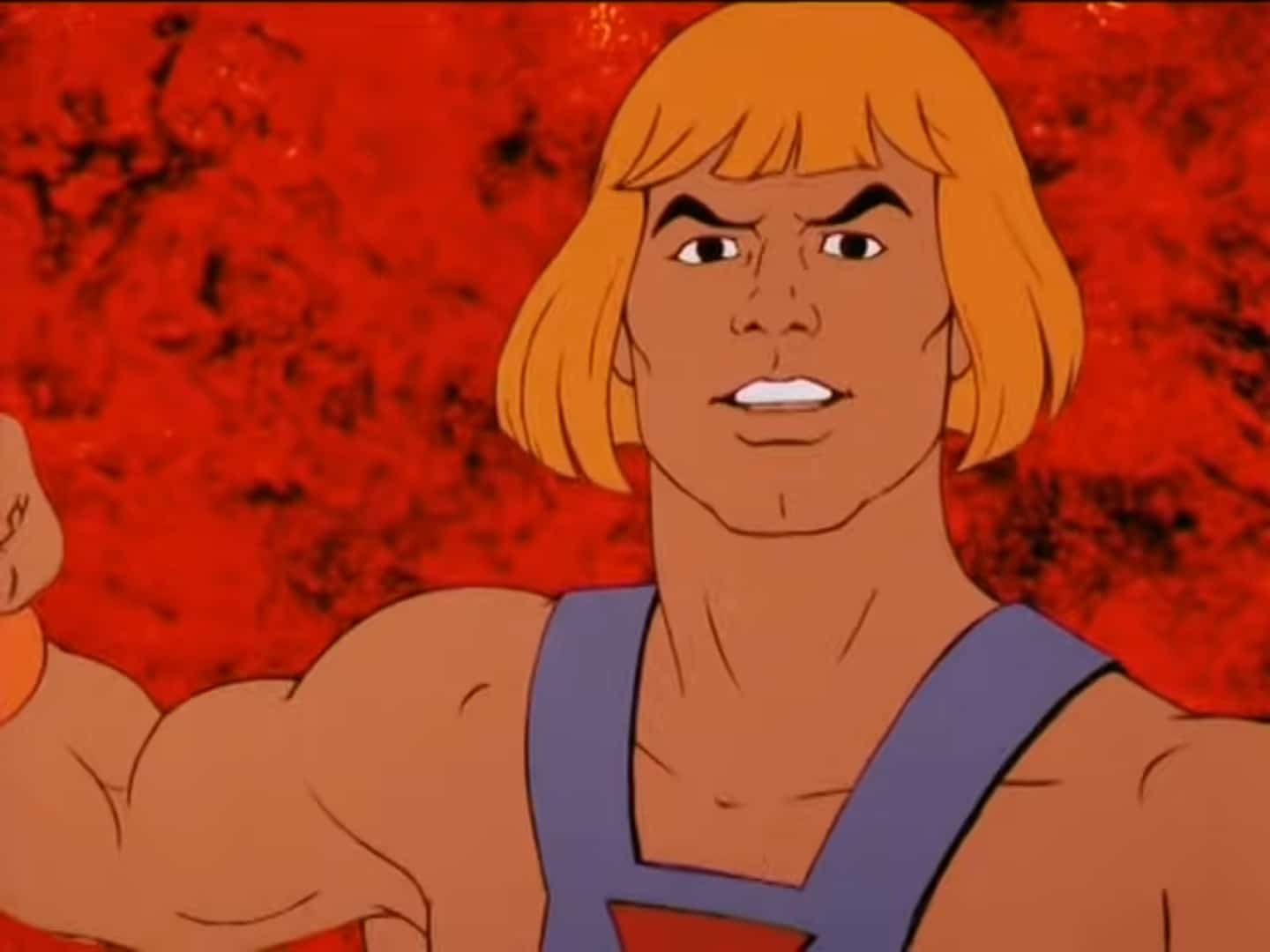Moments in Toy History: How Mattel Gained the Power through He-Man
Since its founding in 1945, Mattel has been one of the most influential toy manufacturers in both the United States and the world. While one of their earliest creations was the Magic 8 Ball, which continues to entertain children and function as a paperweight, their largest toy line, Barbie, emerged in 1959. With the unrivaled popularity of the doll, Mattel easily maintained its top spot for years. However, a decision to turn down Geroge Lucas and his new Sci-Fi epic, Star Wars, led to a shift in the tide.
As Kenner’s Star Wars action figures dominated the market in the late 1970s, Mattel realized that they had missed the train. With its position as one of the top toy producers in jeopardy, Mattel set out to make a phenomenon of its own. However, they did not want to gamble on the success or failure of another movie. So, Mattel needed to find another source of power.
Missing Out on Star Wars Cost Mattel
When George Lucas set out to find a company to create toys for his upcoming Star Wars film, Mattel was on his list. However, this partnership never saw the light of day. Rather than see potential in George Lucas’s vision, Mattel turned away the license.
In the late 1970s, no toy company had seen great profits from a movie license. Moreover, George Lucas had been so secretive about his film that he waited to enlist a toy company until the movie was months away from release. Thus, when Mattel looked over the project, they likely saw nothing but issues with little chance for profits. With no chance of a contract with Mattel, the Star Wars license found a home at Kenner.
Soon after the film was released, Mattel realized the gravity of their mistake. Rather than being another movie that made few waves, Star Wars became a phenomenon. Likewise, Kenner rose to prominence thanks to their gamble while Mattel saw their position slip. Moreover, they found themselves in an even greater hole due to the failure of Flash Gordon and Battlestar Galactica.
Seeking Out the Power
As the 80s settled in, Mattel set out to create a toy line that would rival and eclipse Kenner’s success. However, they were unwilling to use a licensed property to create this success. Not only would a license hinge on the success of the original property, but Mattel would have needed to pay fees, taking away from their profits. Instead, Mattel was determined to create a hit toy line that they would have full control over.
The first step to unlocking the power of success was to determine what children dreamed of most. So, Mattel turned to its marketing teams to conduct research and unlock the secrets of the 1980s child. Their marketing specialists pulled in children ranging from ages 5 through 10 and then presented images of various genres of heroes. With the choices of heroes like policemen, astronauts, fantasy fighters, and many more, the answer began to take shape.
At the same time, barbarians like Conan the Barbarian were becoming popular. While these characters were far from new, the genre was growing to prominence in the early 80s. Likewise, the children’s preference toward a barbarian fantasy fighter became evident in Mattel’s market research.
This research also taught Mattel that children loved the idea of having power and being in charge. Since these children often felt bossed around by their parents, they dreamed of having power for themselves. With this knowledge, Mattel knew that they needed a toy line that would inspire self-worth and empowerment. Moreover, the research taught Mattel that children loved knowing who was on the good side and who was bad.
Designing a New Hero

While the Marketing team was rigorously looking into the interests of the 80s child, Mattel had their designers working on potential ideas. One of their lead designers, Roger Sweet, was pulled in to begin brainstorming ideas for this new toy line. However, he had no solid direction on the theme or look of the toy line at that time. Instead, he drew inspiration from his love of bodybuilders. He believed, like himself, that children and lanky boys would feel empowered playing with muscle-bound characters.
So, he began by taking figures from Mattel’s Big Jim toy line and modifying them. As he bulked up the prototype designs with clay muscles, he designed three prominent looks. First, there was a militaristic brute with a tank for a head. There was also a muscle-bound space warrior with a helmet that suspiciously resembled Boba Fett. The third prototype was a dark-haired barbarian with an axe, which he named He-Man.
As the marketing research concluded that children loved barbarians, He-Man became the winner. For better or worse, the name also continued and remained the chosen name of Mattel’s newest hero.
He-Man’s Similarity to Connan
While Roger Sweet has proclaimed that Conan the Barbarian did not influence his designs, rumors have still swirled amongst fans. Mattel did momentarily hold the license for Conan toys, but those events occurred after Roger Sweet presented his muscle-bound prototype. Still, Frank Frazetta’s barbarian artwork was used in Mattel’s marketing research, and his style was popular at the time. The similarities between He-Man and Conan even led to a lawsuit. To find out more about the rumors swirling around this design, check out our in-depth article here.
The Artist Behind the Masters of the Universe

While Roger Sweet is one of the largest names tied to He-Man, the toy line was not created by one single man at Mattel. Instead, an entire team worked on the toy line. Still, only a select few directly influenced the look of the toy line. When it came to visualizing each character, no name was more important than Mark Taylor.
While he may not have directly created the first 8 characters, Mark Taylor defined the final appearance of these characters. He even pulled from his own experiences and past to solidify these designs. For instance, he was inspired by the stories of a real skeleton in a carnival haunted house to develop the frightening figure of Skeletor.
He also claimed credit for “designing” Battle-Cat. While the figure itself was an enlarged generic tiger from a Tarzan line, Mark Taylor decided to paint it green and throw a helmet and saddle on it. Thus, He-Man gained his iconic mount.
He also designed the box art for the first year of He-Man toys. He was so inspired and in-live with the toy line that he reportedly pulled all-nighters working on the designs. Thus, much of He-Man’s iconic appearance was thanks to this man’s creativity and hard work.
Promoting He-Man to the 80s Kid

As Mattel began to introduce retailers to their newest toy line, they quickly realized that they had missed a new step in creating a hit toy line. During one of their presentations, Mark Ellis reported being taken by surprise when one questioned what media was tied along with the toys. Before the earlier decades, toys now were expected to have cartoon, comic, or movie tie-ins to inspire interest. However, Mattel had not previously considered any of these elements. So, he did what any good salesperson would do, quickly came up with a story and say that a comic series was in the works.
With the lie set in place, Mattel had to scramble to get a mini-comic series produced to package along with their first set of toys. To help create these comics, they turned to the artistic talent of Alfredo Alcala while Donald F. Glut wrote the script.
Even though Mattel quickly put together a mini-comic series, they soon found that they would need to exaggerate the truth again and claim that a cartoon series was also in the works. Unfortunately, they could not simply pull together a small project to get a cartoon off the ground. Instead, Mattel quickly sought out a partner, Filmation.
The relationship between Filmation and Mattel began with a simple animated cartoon for the toy line. As one of the founding members of Filmation, Lou Scheimer, enjoyed the barbarian aesthetics of the toys, he approached Mattel to expand their relationship and create a cartoon series. This fateful union defined He-Man to the masses, even though the mini-comics presented another version of Eternia.
Raking in the Ratings and the Profits

Filmation created several changes to the characters and setting before debuting their cartoon series. As Micheal Halperin defined the characters of Eternia, he decided to help distinguish the forces of evil from good. Moreover, Filmation decided to create an alter-ego for He-Man, Adam.
The show also featured many memorable PSAs and life lessons tied to the end of each episode. While these segments were required by governmental regulations, they helped to promote He-Man as a role model. Thus, both parents and children fell in love with He-Man and the Masters of the Universe.
Likewise, the Masters of the Universe toys became the hottest product. Within the first year, Mattel generated a respectable $38 million. By 1986, the profits soared to astronomical heights, netting $400 million. For a time, it seemed that nothing could possibly make the toy line fail. Unfortunately, Mattel became their own worst enemy.
The Fall of Eternia
As the Masters of the Universe gained popularity, Mattel convinced themselves that they needed to create as many characters as possible. Since the toys were modularly designed, where the bodies could be reused and rearranged to create a new character, Mattel’s creators quickly produced many side characters. The quality of these characters could be drawn into question; however, the worst aspect of this flood of new characters was that it removed He-Man and Skeletor from the picture.
Toy shelves were soon overflowing with various He-Man villains and sidekicks with not a single He-Man in sight. With excessive stock overfilling their shelves, stores saw no reason to invest in even more Masters of the Universe action figures. This loss of faith led to the toy line falling flat on its face.
Otherwise, some felt that the line lost some of its luster thanks to another sister toy line, She-Ra. Since Mattel had noticed that girls enjoyed the world of He-Man, they created a character and line directed to them. While some may have been bothered by their sisters playing with the power, the stock issues were the main downfall of the line.
The terrible 1987 live-action film did little to help the situation either. The least stated about that blunder, the better.
Remembering the Power of Eternia
Even though He-Man and the Masters of the Universe sharply fell out of popularity in the 1980s, the toy line remained a defining part of most 80s children. So, there came no surprise when Mattel attempted to revive the property in 2002 and recently again in 2021. While the 2000s series gained little traction, the recent CGI series has shown some potential. Still, He-Man has not reached the heights of its 1980s incarnation.
Meanwhile, the fans of He-Man love to seek out the mementos of their past with the original toy line. The original toys have a healthy fan base, who regularly seek out mint pieces for their collections.
With the devotion of the old fans and the influx of younger fans, the Masters of the Universe remains a powerful franchise.
Do you have old and used He-Man and the Masters of the Universe toys?
If you have a collection of old and used toys, you can turn those toys into cash. There is no reason to let those old toys collect dust. Contact us today to sell your He-Man and the Masters of the Universe toy collection.
Our professional, friendly, and expert staff have decades of experience as collectible toy buyers. If you are ready to sell your collection today, fill out the form below or call us at 888-946-2895.
About the Author
Chris Ingledue is the founder and owner of Wheeljack’s Lab pop Culture and Toy Shop. His vision has always been to reunite customers with their favorite childhood toys and pop culture, triggering fond memories, and reigniting their imaginations. Every day he works in the “lab” where it’s Christmas 365 days a year; scouring the internet – like we did the Sears Catalog of yesteryear – for the next great treasure, awaiting the arrival of the postman as if he was Santa Claus himself and helping collectors worldwide with their own versions of Christmas. For Chris, every day as a vintage toy buyer is an absolute joy!